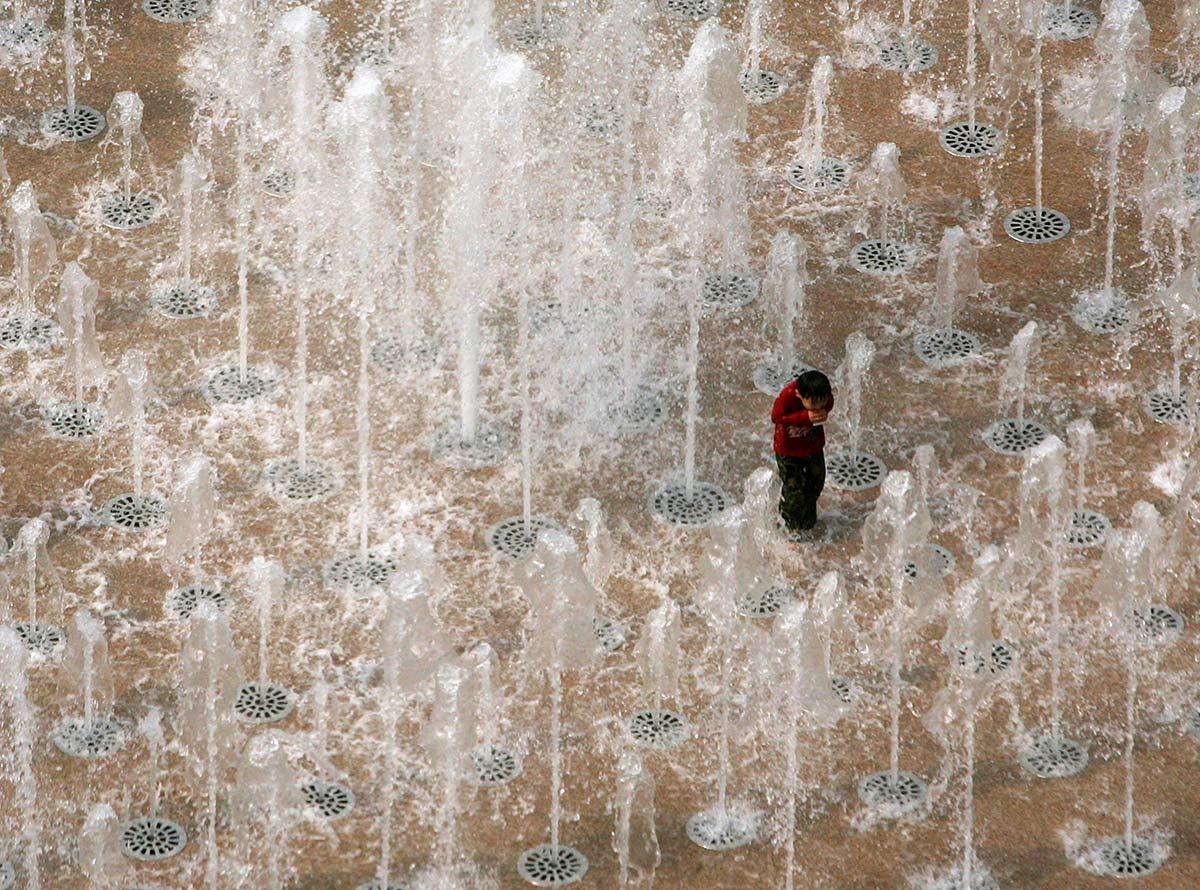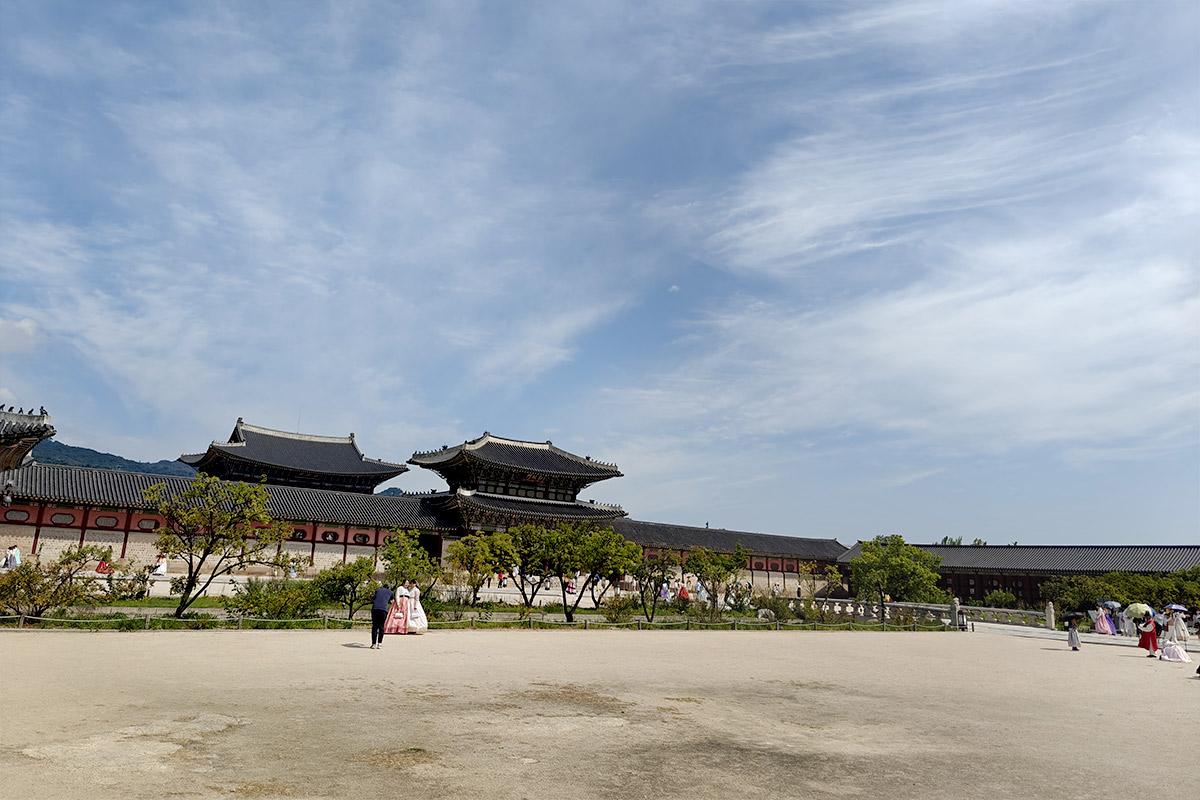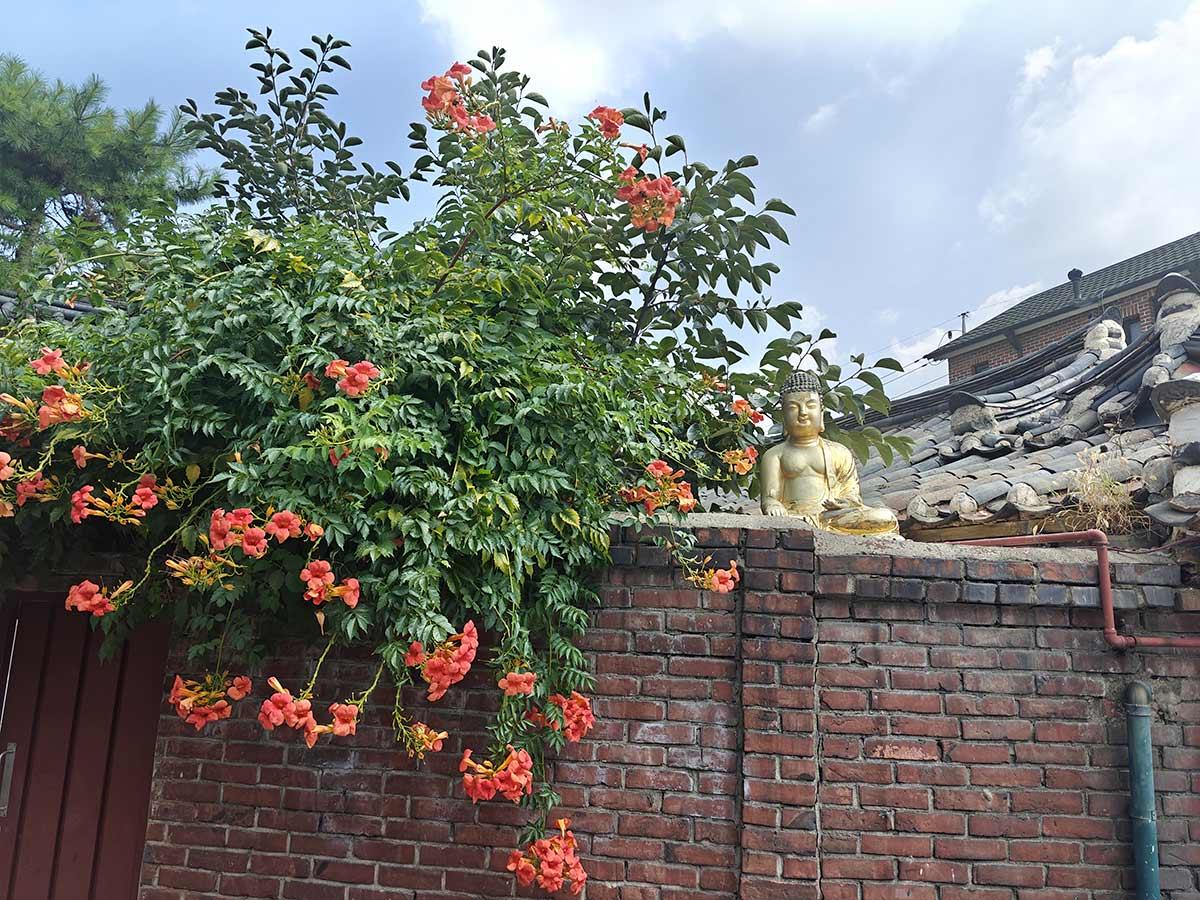 | « Back to article | Print this article |
Beneath all the buzz of Seoul's night markets and its famed glass skin, the city is anything but skin deep and has enough soul in it, if you care to look beyond its surface.

Despite the brouhaha, if you are yet to watch any K-dramas on OTT and haven't warmed up to any K-pop either, then you too perhaps hail from my vintage when your sole Seoul association dates way back to the Seoul Summer Olympics in 1988.

But much water has flown through the Han since then, and I have a lot of catching up to do, as I found out in my four super-packed days, spent in the buzzing capital city of South Korea, Seoul.

So, first things first: the pronunciation of Seoul is soul where the 'e' is incidental or silent.

Beneath all the buzz of its night markets and its famed glass skin, the city is anything but skin deep and has enough soul in it, if you care to look beyond its surface.
Comfortably juxtaposed are its many contrasts; its all steel and glass skyscrapers that stand against a UNESCO-certified village in the heart of town; its global electronic brands like Samsung and LG, co-existing amicably with a public library that is a couple of storeys tall and its fashionable designer wear rubbing shoulders with its pretty hanboks. Thanks to a well-planned itinerary by Intrepid Club, we manage to sample it all.

A one hour-long drive from Incheon, the country's international airport gets us into Seoul. Though ensconced in a coach, the hour gives us a first impression of how well-laid out and green the city is, with its broad, spic and span sidewalks, its disciplined traffic, its towering buildings and its city folk, who look focussed as they stride resolutely to get their chores and errands done.

Our all Indian 30 women strong animated group is being guided by a local woman, Angie, who addresses each one of us for four consecutive days as 'My beautiful lady', unknowing of how much in awe we all are of her glowing visage!
Just like most Asian metropolises, a good way to get well initiated into Seoul is via its bustling night markets. And that is exactly what we do after a Korean dinner at Flower Blossom on the Rice.
We head to Myeongdong Street which is alive and buzzing, even after dinner hours with numerous Korean street food stalls selling everything from fresh fruits to seafood, colourful live entertainment and games, and shop after shop of skincare products.

Some from the group choose to get down to shopping immediately, others bravely explore exotic culinary fare, while a foursome, which includes me, try our hand quite literally at a game that involves pounding on some drums to a fast count as an audience cheers and jeers.
Call it beginner's luck, but I emerge a winner and what am I rewarded with? Skincare lotions, of course; tubes of magical Korean sunscreen and moisturiser!
Whilst most shops accept cards, it is a good idea to carry the Korean currency, the won, for any street side purchases. Typically, a hundred Indian rupees came to roughly 1,600 won, as we found out at the foreign exchange counter at the airport.

For any of us and there are countless who hold that view, who feel that the young no longer read or that libraries are outdated spaces where books gather dust and fight mould, Starfield Library is a revelation and a statement of hope. Sitting in the middle of a massive mall, Starfield is a public space which anybody is free to step into, pick up a book, find a corner, shut out the world and read.
With books stacked from floor to ceiling and escalators transporting you to the next level, besides being a bibliophile's paradise and akin to a book park, Starfield is also an architectural marvel. The entire space is sans any doors, almost suggesting how minds too should be barrier free, involuntarily throwing me to Tagore's 'Where the mind is without fear; where knowledge is free and the world has not been broken up into fragments'...

Some of the most encouraging sights we saw were of children sprawled out on floors blissfully lost between covers; young ones completely absorbed in picture books and parents and children sitting side by side, their phones nowhere to be seen, reading.
After clicking a dozen pictures all over Starfield, we finally settle down over a latte at a giant Starbucks that sits right at the entrance of Starfield and affords fabulous views of its storeys. Later, I discover that Starfield happens to be one of the most 'Instagrammable' spaces of Seoul and justifiably so.

If you've ever been to places like Srinagar or Jaisalmer, you'll know that one of the photo opportunities of these spots is slipping into local attire and getting yourself clicked. So, generations of Indian families have had their pictures taken in one of the famed gardens of Srinagar, whilst foreign tourists pose jubilantly, when a saafa or a turban is tied on their heads in Rajasthan. I've mostly avoided such shenanigans on my travels but fell to the hook of the hanbok in Seoul.
Worn since antiquity, the hanbok is a two-piece dress for women, comprising a top and a skirt. Our large group is navigated into one of the rental shops that stands across the street from Gyeongbokung Palace, the plan being that we choose a hanbok from an entire shop full of them, quickly slip into it, get our hair done, if we like, and then sashay into the palace looking as Korean as we can.
From row after row of pastels and bright hues, I pick out a delicately-embroidered, muted grey, skipped the hairdo bit, and step into the palace grounds along with tourists from many other parts of the world, all braving the heat and dressed in traditional Korean garb for at least the next hour or so.

We are told that the palace, that dates back to 1395, was built by the last ruling Joseon dynasty, and has survived much upheaval, including a ravaging fire and Japanese colonisation, only to be gradually restored and declared a cultural property in the 1990s.
The Gyeongbokung Palace also happens to be the largest of Seoul's five royal palaces and is considered a national treasure.

One of my favourite memories and exploring of Seoul will have to be a visit to the charming Bukchon Hanok village. A hanok is a traditional Korean house, crafted with graceful sloping roofs and tiles and Bukchon happens to have the highest concentration with 900 such homes, that are spread across a maze of uphill alleyways, in sharp contrast to the city's modern developments.
The homes are still very much inhabited, making the entire area a residential one, though some of the homes have also been converted into guest houses and cafes. With the village being a great tourist attraction, every other home is forced to display signs that read 'Silence Please' or 'No noise' and so on, urging tourists to keep it low and litter free.
In the course of our ambling, we chance upon a sign that reads 'Observatory' and decide to follow it. Any observatory must sit at a height and our voyage turns out to be a bit of a climb, so we are only too relieved to guzzle one of their many cooling welcome beverages that comes included in the entry fee.

There's a small but tasteful memento shop that has paintings and ceramics which we admire, before finally going up to the observatory to take a bird's eye view of the city. Luckily, the day is bright and clear and we catch a panorama of Bukchon and the rest of the city including the famous Seoul Tower.

Of course, whilst in Bukchon, one must step into the flagship Sulwahsoo store, quite the mecca for skincare. Beautifully laid out, very minimal and monochromatic in its appeal, the store in many ways embodies Korean architectural grammar set in a contemporary avatar. Though I commit the sacrilege of exiting Sulwhasoo without making any skin or hair care purchases, I am thoroughly impressed by how a commercial establishment has been imagined in such a green, outdoorsy and indigenous fashion. Instead of jars of skin care, I have portraits of its façade and flowerings for a memento.

A great way to bring the Seoul sojourn to a close is to take a river cruise down the Han. 'Han' in Korean means big, so the name literally means 'big river'.

Also called Hangang, the river cuts through the city from north to south and when we walk towards our cruise in the evening, we find the riverside dotted with joggers and bikers and dogwalkers and runners, making the most of the river breeze, the neatly laid out tracks and the alluring views.

In some ways, it looks a bit like Clark Quay, in Singapore, minus its thriving night life. During our cruise, that lasts for about an hour-and-a-half, we enjoy the bobbing of the boat as it glides along the river current, catch a glorious sunset and a moonrise and see neon lights and fireworks light up the Seoul skyline, as though all of it was bidding us a safe journey back home.
Supriya Newar is a multilingual writer and poet from Kolkata. Besides being a music aficionado, she is also an avid traveller, particularly drawn to places that have a je ne sais quoi about them. She may be reached on connect@supriyanewar.com.
Her Web site is: www.supriyanewar.com(external link).
Seoul, Supriya discovered, was not expensive like Japan but not as cheap as Thailand. "Somewhere in between," is her verdict.
Stay options were many, for various budgets.
Since there's so much of street food to be explored, meals can be easy on the pocket. She says cafes also abound, which aren't expensive either. The range of dining is also large. But choices for vegetarians were limited.
She flew from Kolkata to Seoul's Incheon International Airport, via Changi, Singapore, on Singapore Airlines and her economy ticket set her back by Rs 67,000 round trip.